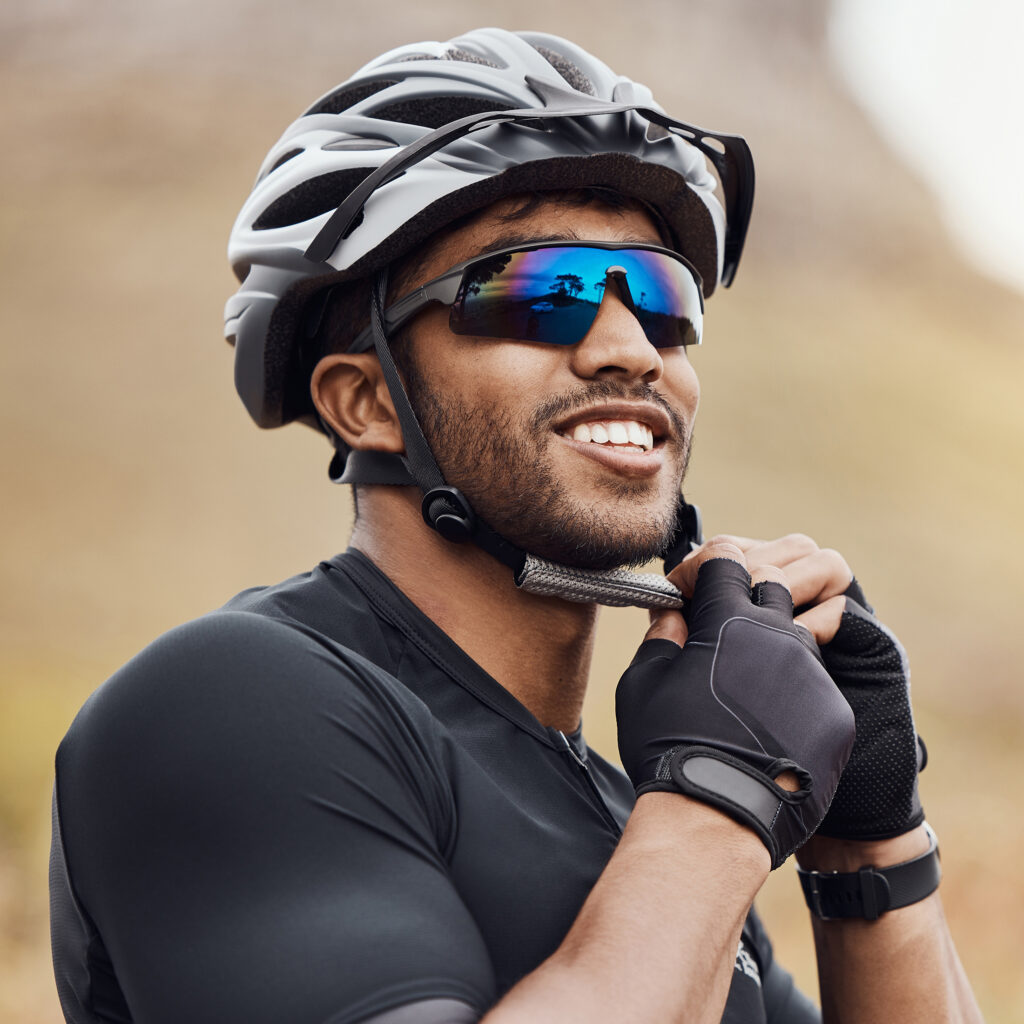Why Wrap Frames Are Different
When you perform a refraction, the phoropter sits flat and parallel to the patient’s face. They’re looking straight through the lenses, perpendicular to the optical center.
But a wrap frame changes everything:
- It curves the lens around their face.
- That tilt changes the effective prescription - sometimes dramatically.
- The steeper the wrap, the bigger the change.
If we ignore that, they’ll end up with fishbowl vision, double images or weird pulling sensations.

How We Fix It: Compensation
When a lens is tilted, we compensate the prescription to match how their eye will actually see through it. There are two keys here:
1. Compensating the Power
The prescription must be recalculated for the wrapped angle and base curve. Many wrap frames use a steeper base curve (like an 8 base instead of a 4 base), so every point away from the optical center can have extra distortion if we don’t compensate for it.
2. Freeform Design
Freeform lenses are critical here. They optimize not just one point - but the entire surface for how the glasses are actually worn.
Critical Measurements for Wrap Frames
Position of wear measurements are everything. The big three:
Face Form (Wrap) Angle:
- This is the key value. It drives the whole compensation calculation.
Pantoscopic Tilt:
- The tilt of the frame when it sits on the patient’s face. If it’s off, their view is off.
Vertex Distance:
- How far the lens sits from their eye.
Without these measured properly - and without using a freeform design - you’re likely to get distortion or double vision.
Why We Add Prism to Wrap Frames
When you tilt a lens, the optical center moves outward. So we add base-in prism to bring the image back over the eye. If this isn’t done, they’ll feel their eyes pulling to adjust - classic prism complaint.
Manufacturing Challenges
Wrap frames aren’t just tricky for the lab because of optics - they’re also tough to cut and edge.
- They often need special notches and shelves cut into the lens to fit snugly.
- Most tracers capture lens shapes in 2D, but wrap frames are 3D.
- If the trace isn’t adjusted for wrap, your lens will be too wide and too short - it won’t seat properly and will pop out.
Troubleshooting the Fishbowl

Common wrap frame complaints:
- Double vision
- Fishbowl or pincushion effect
- Slipping lenses
Solution:
- Use fully compensated freeform single vision or freeform progressive designs
- For sunglasses, pick a distance-optimized progressive - not the same one you’d use for everyday, all-distance wear.
- Take precise, position-aware measurements - you can’t easily adjust a wrap frame later like a metal dress frame.
Final Wrap Tips
- If the frames don’t fit before you add prescription lenses, they won’t magically fit after.
- If the temples flare out after lens edging, it’s usually a sign the trace or shelf cut was wrong.
- Wrap frames often need a snug fit or straps - especially for sports or outdoor wear.
The Bottom Line
Wrap frames can look and work great - if you design, compensate and manufacture them properly.
Need help? Contact us. We do this every day.
